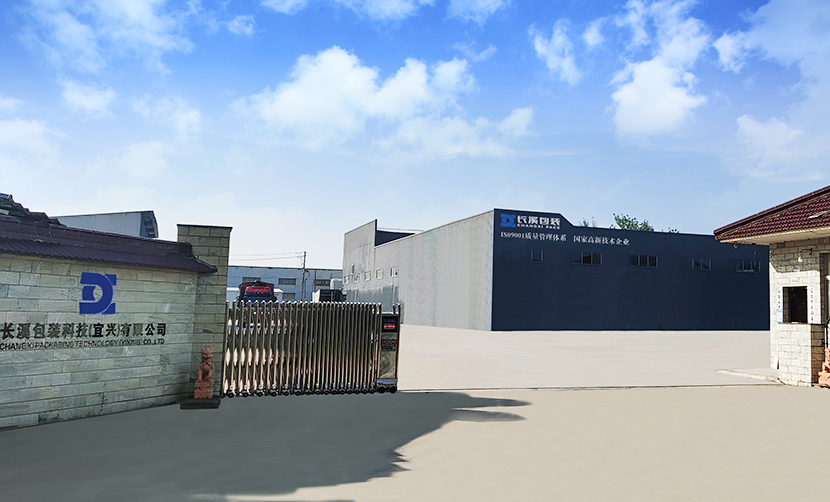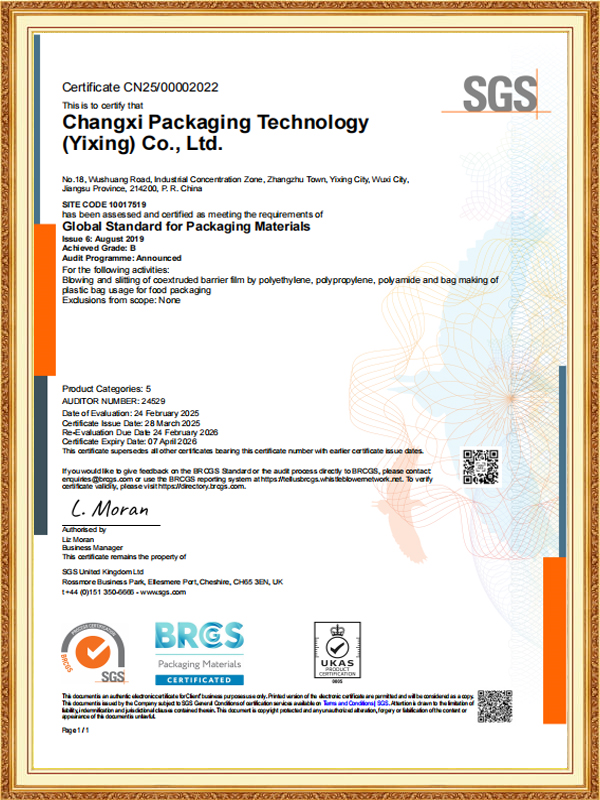If you need any help, please feel free to contact us







multi-layer co-extruded barrier film has become an essential material in modern packaging due to its ability to protect products from environmental fa...
View MoreThe preservation of food is a constant challenge in the journey from production to consumption. Spoilage, primarily driven by microbial growth and che...
View MoreIntroduction: The Unseen Engine of Convenience In the dynamic landscape of modern food retail, packaging has evolved from a mere container to a critic...
View MoreThe landscape of modern packaging is complex, driven by demands for extended shelf life, product integrity, sustainability, and cost-effectiveness. Fo...
View More1. Principles and advantages of multi-layer co-extrusion technology
Multi-layer co-extrusion technology is a high-efficiency manufacturing process for producing multi-layer composite films or sheets. It can extrude multiple layers of different materials simultaneously in the same extruder or in continuous extruders and quickly compound them together. , forming products with specific structures and functions. By precisely controlling the type, thickness and arrangement of each layer of materials, this technology can achieve the best match of the properties of a variety of different materials to meet specific packaging needs.
In the production process of Changxi Packaging Technology, multi-layer co-extrusion technology has the following significant advantages:
Strong functionality: Multi-layer co-extrusion technology can combine materials with different properties as needed, so that they can have different functions of multiple materials at the same time. For example, using PE material as the inner layer can make the packaged products have good heat sealing performance and mechanical properties; using barrier materials such as EVOH/PVDC can effectively block oxygen and water, extend the shelf life of food, and effectively lock in freshness.
Lower cost: Multi-layer co-extrusion high-barrier material technology is a multi-layer co-extrusion molding process that does not require traditional post-processing processes such as compounding and coating, which can effectively reduce raw material costs and production processes. In addition, to achieve the same barrier effect, due to the simplicity of this process, the cost of the products produced can be reduced by 10%-20% compared with composite products.
Safety and environmental protection: Multi-layer co-extrusion technology does not add any binder, avoiding the problem of solvent residue and achieving green packaging. This is critical for food safety as residual solvents can cause food safety issues.
2. Application of multi-layer co-extrusion technology in the production of Lamination & Printing Base Film
In the production line of Changxi Packaging Technology, multi-layer co-extrusion technology is widely used in the production of lamination and printing base films. The following are specific application methods:
Barrier layer design:
The barrier layer is a key part of the lamination and printing base film. It is responsible for blocking oxygen, blocking water, and preventing oil leakage. By selecting appropriate barrier materials (such as EVOH, PVDC, etc.) and controlling their thickness, the barrier properties of the materials can be precisely adjusted to meet the packaging needs of different products.
For example, for food that needs to be kept fresh for a long time, you can choose EVOH materials with high barrier properties and increase their thickness appropriately to improve the barrier effect of the packaging.
Adhesive layer design:
The function of the adhesive layer is to bond the barrier layer and the support layer to ensure interlayer peeling force. The selection of adhesive layer material and thickness is generally determined based on the materials of the support layer and barrier layer and the required bonding strength.
In the production process of Changxi Packaging Technology, the adhesive layer usually uses materials with good compatibility with the barrier layer and support layer, and by accurately controlling its thickness and extrusion process parameters, it ensures that the inter-layer peeling force is moderate to avoid in the packaging process. delamination or peeling occurs.
Support layer design:
The support layer is the basic part of the lamination and printing base film. It is responsible for providing sufficient strength and toughness to support the entire packaging structure.
When Changxi Packaging Technology selects support layer materials, it will comprehensively consider its mechanical properties, heat sealing performance, cost and other factors. For example, for products that need to bear a certain weight, PP or PE materials with higher mechanical strength can be selected as the support layer.
Optimization of multi-layer co-extrusion process:
In order to ensure the effective implementation of multi-layer co-extrusion technology, Changxi Packaging Technology continuously optimizes its production process parameters. For example, by precisely controlling the extrusion temperature, screw speed, traction speed and other parameters of each layer of material, uniform extrusion and rapid compounding of each layer of material can be achieved.
In addition, the company also uses advanced online detection and control systems to monitor product quality and production process parameters in real time to ensure the stability and consistency of product quality.
3. Product performance and application effects
Lamination & Printing Base Film produced by using multi-layer co-extrusion technology has excellent barrier properties, mechanical properties and heat sealing properties. These properties make this product widely used in food packaging, pharmaceutical packaging, industrial product packaging and other fields. For example, in the field of food packaging, this product can effectively extend the shelf life of food; in the field of pharmaceutical packaging, this product can ensure the stability and safety of drugs; in the field of industrial product packaging, this product can protect precision machinery parts from Subject to oxidation and corrosion.